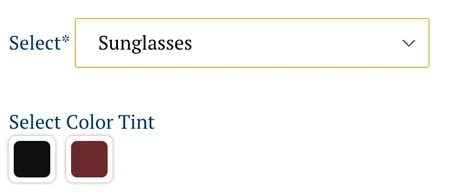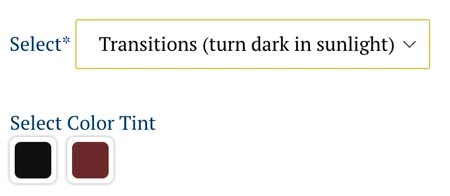Transitions, Polarized and Standard Sunglasses Explained
As purveyors of quality eyewear, we give our customers a number of lens options, including multiple choice for lens tinting. In addition to standard sunglass tinting, you can choose transition lenses, which are clear when indoors but darken when exposed to sunlight. Or you can select polarized sunglasses, which help to greatly reduce reflected glare. All of the above can be made as prescription, bifocals or readers, or also made without any vision correction. To help you choose the best eyeglass tinting option for you, here's more detail about each:
Standard Sunglasses

Depending on your color choice, standard sunglasses tinting both help to shade the eyes from sun glare and can also helps you see more clearly in harsh sunlight (and they tend to make us look cool!).
It's important to note that sunglass tinting in and of itself does not offer protect from ultra violet rays from the sun or rays from computer screens. Luckily your Focusers sunglasses come with Ultra Violet filtering to provide such protection.
Transitions

Transitions, which are also known as photochromatic lenses, are clear until exposed to ultra violet light from the sun or other sources, such as computer screens. They then darken and become sunglasses, returning to clear again when you're indoors. An advantage of prescription transition lenses is you only need one pair of glasses which can be used both indoors or out, giving you vision correction and shading from the sun. This may provide both convenience and cost savings.
But some people prefer indoor prescription glasses to be different than outdoor prescription sun wear. For example, smaller framed metal Windsors may provide the perfect style and function for indoors, while larger framed tortoise shell Peabodys allows for more eye shade and a different look. In that case, choosing clear prescription lenses for indoors and separate, standard prescription sunglasses for outdoors makes sense. It's really a matter of personal preference.
Also, transition lenses will not fully darken without UV light. So when driving in a car where the windshield is designed to block UV rays, your transition eyeglasses may not provide as much eye shade as standard sunglasses, which aren't dependent on UV light.
Polarized Sunglasses

Polarized lenses both protect your eyes and help you see better by cutting down on reflected glare from metal and glass surfaces, such as from cars or buildings, or from water, such as from the ocean or lakes on a sunny day, or rain puddles on the road while driving. Polarized lenses can also substantially reduce eyestrain if you're often outdoors on sunny days or do a lot of driving. One minor drawback to polarized lenses is that they can make it more difficult to read LED or LCD screens, such as a computer screen.

